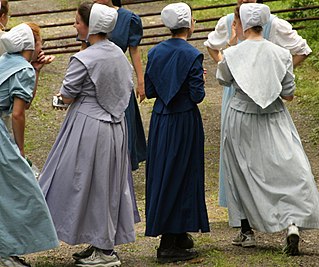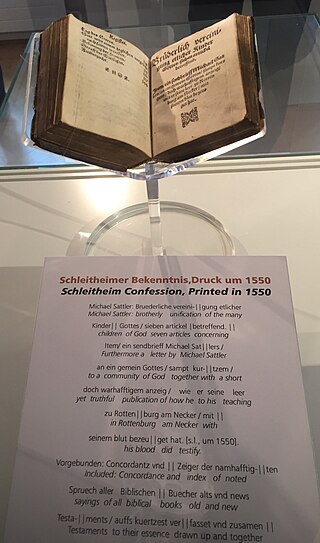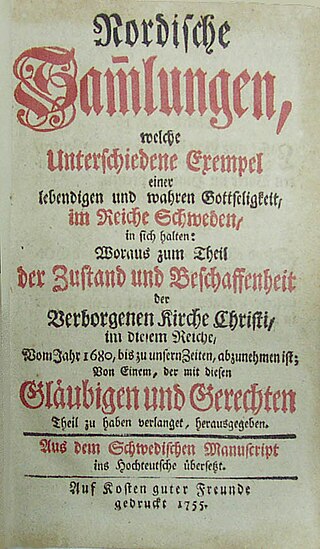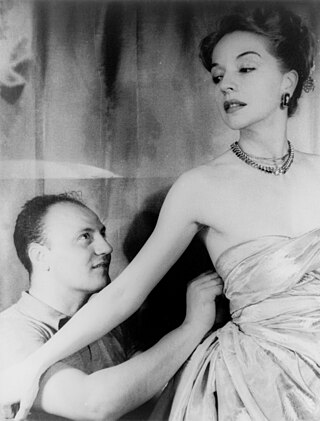Anabaptism is a Christian movement which traces its origins to the Radical Reformation in the 16th century. Anabaptists believe that baptism is valid only when candidates freely confess their faith in Christ and request to be baptized. Commonly referred to as believer's baptism, it is opposed to baptism of infants, who are not able to make a conscious decision to be baptized.

Mennonites are a group of Anabaptist Christian communities tracing their roots to the epoch of the Reformation. The name Mennonites is derived from the excommunicated Roman-Catholic chaplain Menno Simons (1496–1561) from Friesland, part of the Holy Roman Empire, present day Netherlands. Menno Simons became a prominent leader within the wider Anabaptist movement and was a contemporary of Martin Luther (1483–1546) and Philipp Melanchton (1497-1560). Through his writings about the Reformation Simons articulated and formalized the teachings of earlier Swiss Anabaptist founders as well as early teachings of the Mennonites founded on the belief in both the mission and ministry of Jesus. Formal Mennonite beliefs were codified in the Dordrecht Confession of Faith (1632), which affirmed "the baptism of believers only, the washing of the feet as a symbol of servanthood, church discipline, the shunning of the excommunicated, the non-swearing of oaths, marriage within the same church", strict pacifistic physical nonresistance, anti-Catholicism and in general, more emphasis on "true Christianity" involving "being Christian and obeying Christ" as they interpret it from the Holy Bible.

Plain people are Christian groups in the United States, characterized by separation from the world and by simple living, including plain dressing in modest clothing. Many plain people have an Anabaptist background. These denominations are largely of German, Swiss German and Dutch ancestry, though people of diverse backgrounds have been incorporated into them. Conservative Friends are traditional Quakers who are also considered plain people; they come from a variety of different ethnic backgrounds.

The Dunkard Brethren Church is a Conservative Anabaptist denomination of the Schwarzenau Brethren tradition, which organized in 1926 when they withdrew from the Church of the Brethren in the United States.

The Old Order River Brethren are a River Brethren denomination of Anabaptist Christianity with roots in the Radical Pietist movement. As their name indicates, they are Old Order Anabaptists.

The River Brethren are a group of historically related Anabaptist Christian denominations originating in 1770, during the Radical Pietist movement among German colonists in Pennsylvania. In the 17th century, Mennonite refugees from Switzerland had settled their homes near the Susquehanna River in the northeastern United States.

Anabaptist theology, also known as Anabaptist doctrine, is a theological tradition reflecting the doctrine of the Anabaptist Churches. The major branches of Anabaptist Christianity agree on core doctrines but have nuances in practice. While the adherence to doctrine is important in Anabaptist Christianity, living righteously is stressed to a greater degree.

Madeleine Vionnet was a French fashion designer. Vionnet trained in London before returning to France to establish her first fashion house in Paris in 1912. Although it was forced to close in 1914 at the outbreak of the First World War, it re-opened after the war and Vionnet became one of the leading designers of 1920s-30s Paris. Vionnet was forced to close her house in 1939 and retired in 1940.
Balenciaga SA is luxury fashion house founded in 1919 by the Spanish couturier Cristóbal Balenciaga in San Sebastián, Spain. Balenciaga produces ready-to-wear footwear, handbags, and accessories, and licenses its name and branding to Coty for fragrances. It is currently owned by the French corporation Kering.
Many Christians have followed certain dress codes during attendance at church. Customs have varied over time and among different Christian denominations. As with the Bible, the Church Fathers of Christianity taught modesty as a core principle guiding the clothing that Christians are to manufacture and wear.

Radical Pietism are those Christian churches who decided to break with denominational Lutheranism in order to emphasize certain teachings regarding holy living. Radical Pietists contrast with Church Pietists, who chose to remain within their Lutheran denominational settings. Radical Pietists distinguish between true and false Christianity and hold that the latter is represented by established churches. They separated from established churches to form their own Christian denominations.

Plain dress is a practice among some religious groups, primarily some Christian churches in which people dress in clothes of traditional modest design, sturdy fabric, and conservative cut. It is intended to show acceptance of traditional gender roles, modesty, and readiness to work and serve, and to preserve communal identity and separation from the immodest, ever-changing fashions of the world. For men, this often takes the form of trousers secured by suspenders, while for women, plain dress usually takes the form of a cape dress along with a headcovering.

Haute couture is the creation of exclusive custom-fitted high-end fashion design. The term haute couture is French, "haute" meaning "high" or "elegant," and "couture" translating to "sewing" or "dressmaking." The term haute couture generally refers to a specific type of upper garment common in Europe during the 16th to the 18th century, or to the upper portion of a modern dress to distinguish it from the skirt and sleeves. Beginning in the mid-nineteenth century, Paris became the centre of a growing industry that focused on making outfits from high-quality, expensive, often unusual fabric and sewn with extreme attention to detail and finished by the most experienced and capable of sewers—often using time-consuming, hand-executed techniques. Couture translates literally from French as "dressmaking", sewing, or needlework and is also used as a common abbreviation of haute couture and can often refer to the same thing in spirit.

Stéphane Rolland is a French fashion designer and an haute couture fashion brand. His mother worked at Pictorial Service, one of the most famous Parisian photographic studios, and he grew up surrounded by black-and-white photographs. "Everything was black-and-white; everything was about volume and contrast. My eyes were trained early on with these concepts and everything I do is about contrast, volume and movement. It’s in my DNA".

Laura Yumi Lambert is a Belgian model.

Old Order Anabaptism encompasses those groups which have preserved the old ways of Anabaptist Christian religion and lifestyle.
Charity Ministries, also called Charity Christian Fellowship, is a Conservative Anabaptist network of churches that was formed in 1982 in Lancaster County, Pennsylvania.

A kapp is a Christian headcovering worn by many women of certain Anabaptist Christian denominations, as well as certain Conservative Friends and Plain Catholics, in obedience to Paul the Apostle's command in 1 Corinthians 11:2–10.

A hanging veil, also known as a flowing veil or charity veil, is a type of Christian headcovering, which is worn by some Christian women continually, in obedience to Paul the Apostle's command in 1 Corinthians 11:2–10. Hanging veils enjoy popularity in a diverse array of Christian denominations, especially those of the Anabaptist Christian tradition. In certain Conservative Mennonite Anabaptist congregationations of the Beachy Amish Mennonite tradition, an opaque hanging veil is permitted as an alternative to the kapp if it covers as much or more hair as the kapp, which traditionally is "of ample size to cover most of the hair". Opaque hanging veils are usually white or black in colour for modesty. Hanging veils are designed to drape over the natural curves of a woman's head and hang down a woman's neck. Certain denominations of Christianity provide guidelines regarding the headcovering; the Ministry Training Center of the Biblical Mennonite Alliance, for example, teaches:
A veiling shall be worn by the sisters. We believe the best application of the headship principle as taught in I Corinthians 11 is for the veiling to be worn as a part of their regular attire to cover hair that is allowed to grow to its natural length. Ladies shall wear all their hair neatly up, avoiding fashion extremes, covered with a hanging veil, scarf, or traditional Mennonite covering of sufficient size to substantially cover the hair. Hanging veils and scarves must cover at least from the crown of the head to the bottom of the hair bun.
Conservative Anabaptism includes theologically conservative Anabaptist denominations, both in doctrine and practice. Conservative Anabaptists, along with Old Order Anabaptists and assimilated mainline Anabaptists, are a subset of the Anabaptist branch of Christianity.















